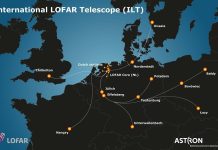
A new theory from a University of Alaska Fairbanks scientist suggests a bold idea: that time—not space—might be the true foundation of our universe, and that time itself could have three dimensions instead of just one.
This radical concept could change how we understand the universe and even help solve one of physics’ biggest mysteries.
The theory, developed by associate research professor Gunther Kletetschka, flips traditional thinking on its head. In modern physics, we live in a universe of four dimensions—three dimensions of space (up/down, left/right, forward/backward) and one of time, which flows only forward.
This combined structure is known as “spacetime” and is a key part of Einstein’s theory of relativity.
But Kletetschka argues that time should actually have three dimensions, just like space, and that space is a secondary effect—more like paint on a canvas, with time being the canvas itself.
Published in the journal Reports in Advances of Physical Science, Kletetschka’s theory adds to decades of work by theoretical physicists trying to describe the deep structure of the universe. What makes his approach different, he says, is that it’s not just abstract math.
His model can actually match the known masses of real particles—like electrons and quarks—which suggests it might describe something physically real.
So what does it mean to have three dimensions of time? To picture it, imagine time as more than a single forward line.
Suppose you’re walking down a road—that’s our usual experience of time, always moving forward. Now imagine another path crossing it sideways.
This second path could represent a different version of the same moment—a sort of parallel outcome. A third path would allow you to move between these different versions. In this model, you aren’t going back in time, but rather moving in new directions within time itself.
Other physicists, like Itzhak Bars from the University of Southern California, have also explored multi-dimensional time theories.
These ideas suggest that extra dimensions of time might reveal themselves under extreme conditions, such as during the birth of the universe or in powerful particle collisions.
But earlier models faced problems, especially around cause and effect—would having more than one time direction mean that effects could happen before causes? Kletetschka’s framework solves this issue with a more advanced mathematical structure that keeps cause-and-effect intact.
Perhaps most exciting is the possibility that this theory could help scientists finally unite two of the biggest theories in physics: quantum mechanics, which explains how tiny particles behave, and general relativity, which explains gravity and the structure of space. These two theories don’t currently work well together, and finding a way to combine them—into a “theory of everything”—has been a major goal for decades.
By accurately predicting the masses of particles and offering a fresh way to think about time, Kletetschka believes his theory could be a step toward that long-sought goal. “This theory shows how rethinking time itself might hold the key to solving some of the universe’s deepest mysteries,” he said.



